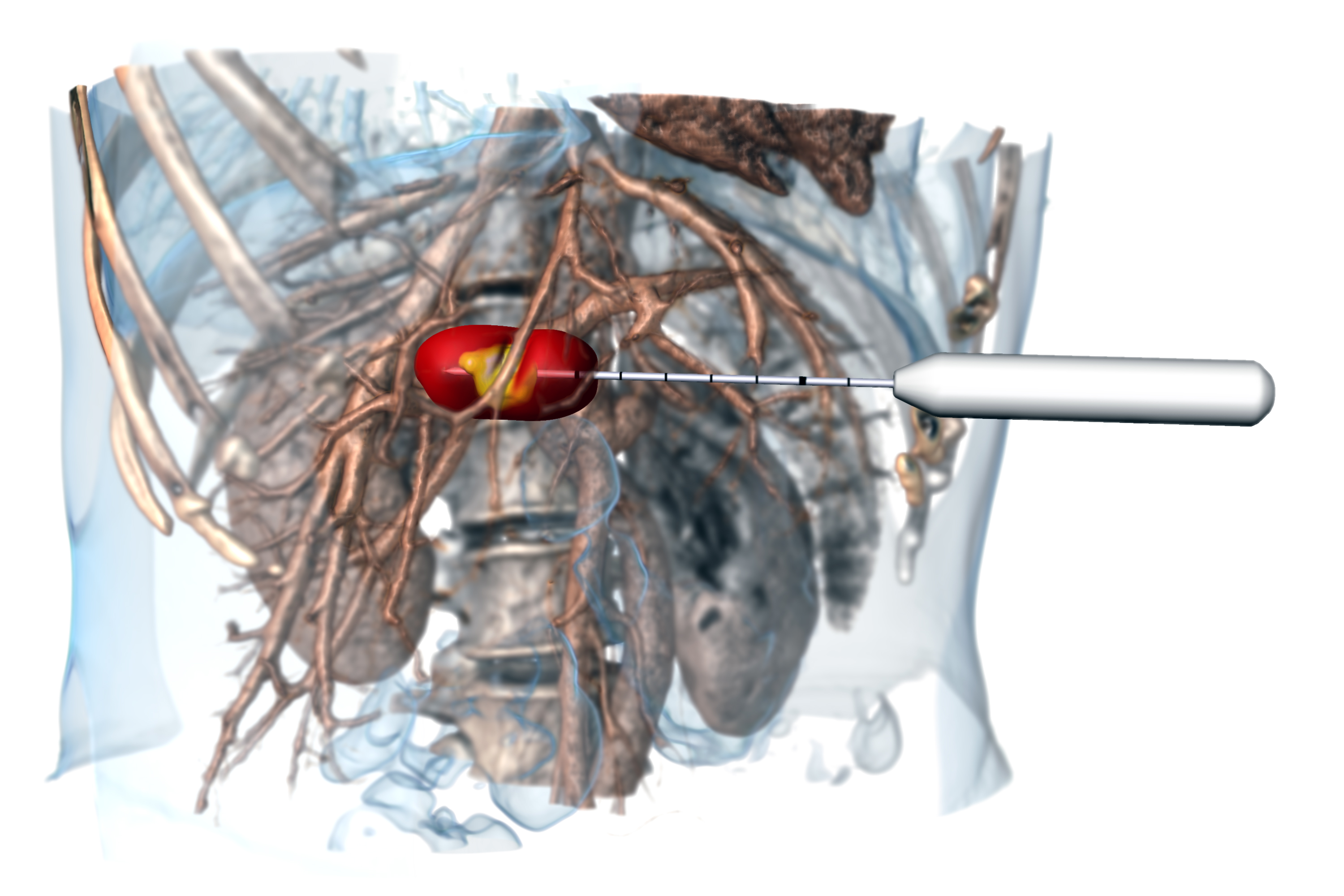Clinical Challenges
Achieving satisfactory treatment outcome in thermal tumor ablation, such as radiofrequency ablation (RFA) or microwave ablation (MWA), is a challenging task: occlusion of the target, vicinity of risk structures, and heat-sink effects of cooling vessels complicate the procedure. Clinical studies consequently report high tumor recurrence rates after tumor ablation procuderes. To overcome these challenges, reliable treatment planning including outcome prediction, support for effcient and safe execution, and verifcation of the treatment success are needed.
 Fraunhofer Institute for Digital Medicine MEVIS
Fraunhofer Institute for Digital Medicine MEVIS